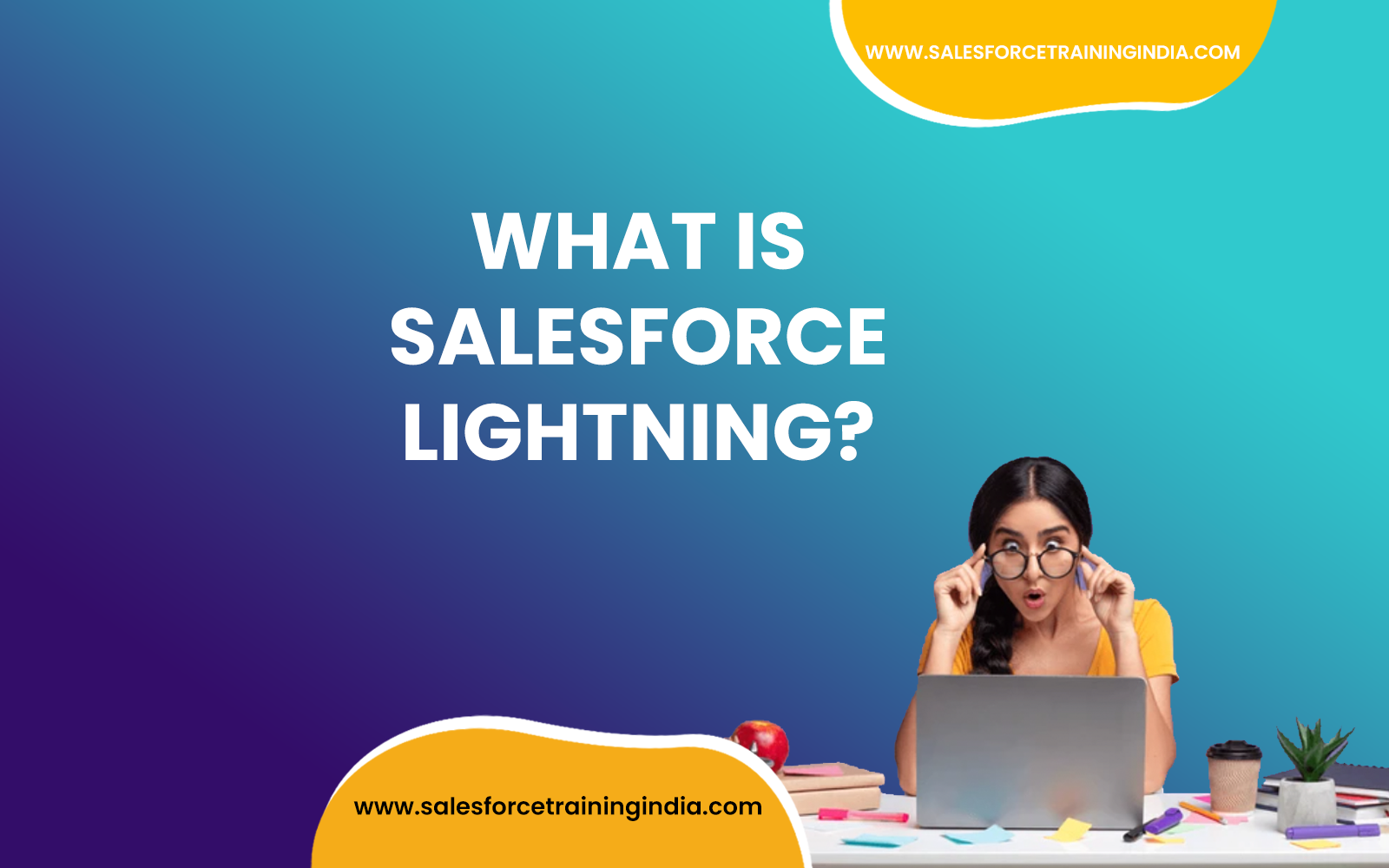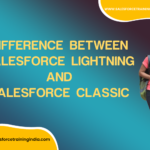Salesforce Lightning is a comprehensive framework introduced by Salesforce for a faster, smarter, and more personalized user experience across the Salesforce platform. It encompasses a set of tools and technologies, including a redesigned user interface (UI), a set of reusable components, and an app development framework.
The Lightning Experience, Salesforce’s modern UI, offers a more intuitive and responsive design, improving user productivity and engagement. It’s optimized for speed and provides a consistent experience across desktop and mobile devices. Alongside this, Lightning Component Framework enables developers to build reusable components and applications with a drag-and-drop interface, facilitating rapid app development.
Lightning also includes additional tools like Lightning App Builder for custom application creation and Lightning Flow for automating business processes. The transition to Lightning from Salesforce Classic represents a significant leap forward in terms of functionality, customization, and usability. It reflects Salesforce’s commitment to delivering a more dynamic and efficient platform for both users and developers. The shift to Lightning is not just aesthetic but also functional, enhancing the platform’s capability to support complex business processes and workflows.

Frequently Asked Questions (FAQs)
1. What is Salesforce Lightning and how does it differ from Salesforce Classic?
Salesforce Lightning is a modern user interface and platform designed to enhance user experience and productivity compared to Salesforce Classic. It offers a more intuitive and visually appealing interface with customizable dashboards, components, and applications. Lightning includes advanced features such as Lightning Components, Lightning App Builder, and Lightning Web Components, which enable more dynamic and responsive applications. Unlike Salesforce Classic, Lightning is optimized for both desktop and mobile devices, providing a seamless experience across all platforms. The key differences lie in its enhanced user interface, advanced customization options, and improved performance and scalability.
2. What are the key features of Salesforce Lightning?
Salesforce Lightning boasts several key features that set it apart from Salesforce Classic. These include the Lightning App Builder, which allows users to create custom apps with drag-and-drop functionality, and Lightning Components, which enable the building of reusable components for faster development. Another significant feature is Lightning Web Components (LWC), which uses modern JavaScript to improve performance and developer productivity. Additionally, Einstein AI integration provides intelligent insights and automation. Enhanced dashboards and reports offer more interactive and visually appealing data presentations, improving decision-making and user engagement.
3. How do you enable Salesforce Lightning Experience in an organization?
To enable Salesforce Lightning Experience in an organization, follow these steps:
- Navigate to Setup: Log in to Salesforce, click the gear icon, and select “Setup.”
- Lightning Experience Setup: In the Quick Find box, type “Lightning Experience” and select “Get Started” under “Lightning Experience.”
- Launch the Migration Assistant: Click “Launch” to start the Lightning Experience Migration Assistant.
- Assess and Enable: Use the migration assistant to assess readiness, review recommendations, and enable Lightning Experience.
- Switch Users to Lightning: After enabling, users can switch between Classic and Lightning as needed. Enabling Lightning ensures users have access to the latest features and improvements for better productivity and user experience.
4. What are Lightning Components and how are they used?
Lightning Components are modular units of code that represent reusable sections of the user interface in Salesforce Lightning. They are built using the Aura framework or Lightning Web Components (LWC), providing a way to develop applications with dynamic and responsive UIs. Lightning Components can be used in various places, such as Lightning App Builder, Community Builder, and standalone apps. Developers can create custom components or use pre-built components from the Lightning Component Library. Using Lightning Components allows for faster development, easier maintenance, and a more cohesive user experience.
5. How does the Lightning App Builder work and what are its benefits?
The Lightning App Builder is a drag-and-drop tool that enables users to create custom pages and applications in Salesforce Lightning without writing code. It allows users to combine standard and custom components to build apps tailored to specific business needs. The App Builder supports the creation of Record Pages, App Pages, and Home Pages, providing a flexible environment for different use cases. Benefits of the Lightning App Builder include increased productivity through easy customization, the ability to quickly iterate and deploy changes, and enhanced user experience with intuitive and responsive designs.
6. What is Lightning Web Components (LWC) and how does it improve development in Salesforce?
Lightning Web Components (LWC) is a modern framework for building dynamic web applications on the Salesforce platform. It leverages standard web technologies like JavaScript, HTML, and CSS to create high-performing, reusable components. LWC improves development by offering better performance and more efficient memory usage compared to the older Aura framework. Developers can use native browser APIs and standard JavaScript functionalities, making the development process faster and more intuitive. Using LWC ensures that Salesforce applications are more scalable, maintainable, and aligned with modern web standards.
7. How can users customize their home page in Salesforce Lightning?
To customize the home page in Salesforce Lightning, users can use the Lightning App Builder. This tool provides a drag-and-drop interface, allowing users to add, remove, and rearrange components on their home page. Users can choose from standard components like Reports, Dashboards, and Recent Items, or add custom components created using Lightning Components or Lightning Web Components. Customizing the home page allows users to tailor their Salesforce experience to their specific needs, improving productivity by surfacing the most relevant information and tools.
8. What are some best practices for migrating from Salesforce Classic to Lightning?
Best practices for migrating from Salesforce Classic to Lightning include thorough planning and assessment. Start by using the Lightning Experience Readiness Check to identify potential issues and areas for improvement. Develop a comprehensive migration plan that includes training for end-users, updating existing customizations and third-party integrations, and leveraging new Lightning features to enhance user experience. Conduct pilot testing with a small group of users to gather feedback and make necessary adjustments. Effective communication and training are crucial to ensure a smooth transition and to help users adapt to the new interface and capabilities.
9. How does Salesforce Lightning improve user productivity?
Salesforce Lightning improves user productivity by offering a more intuitive and user-friendly interface. The Lightning Experience includes features like the Kanban view, which allows users to manage opportunities and tasks visually, and Path, which guides users through stages in a process. Lightning Components and Lightning App Builder enable the creation of custom pages and apps tailored to specific business needs, reducing the time spent navigating and searching for information. Enhanced dashboards and reports provide real-time insights, helping users make informed decisions quickly. These improvements collectively lead to a more efficient and streamlined workflow.
10. What types of reports and dashboards can be created in Salesforce Lightning?
In Salesforce Lightning, users can create various types of reports and dashboards to meet their business needs. Reports can be tabular, summary, matrix, or joined, each offering different ways to organize and display data. Dashboards in Lightning are highly customizable, allowing users to combine multiple report components, visual charts, and gauges to provide a comprehensive view of key metrics. With dynamic dashboards, users can display data tailored to their specific needs without creating multiple dashboards for different users. Interactive charts and filters enhance the usability of reports and dashboards, making data analysis more intuitive and effective.
Our Salesforce course for beginners in India is designed to provide a structured introduction to the essential concepts of Salesforce. You’ll build a solid foundation in Salesforce administration, development, and Lightning Web Components (LWC) through our comprehensive curriculum.
Experience hands-on learning with practical projects, supplemented by daily notes for continuous reinforcement and targeted preparation for Salesforce certifications. Whether you’re starting your journey in Salesforce or aiming to expand your career prospects, our course equips you with the skills needed to confidently navigate the Salesforce landscape. Join us today and unlock the potential of Salesforce with our tailored beginner’s Salesforce course.










